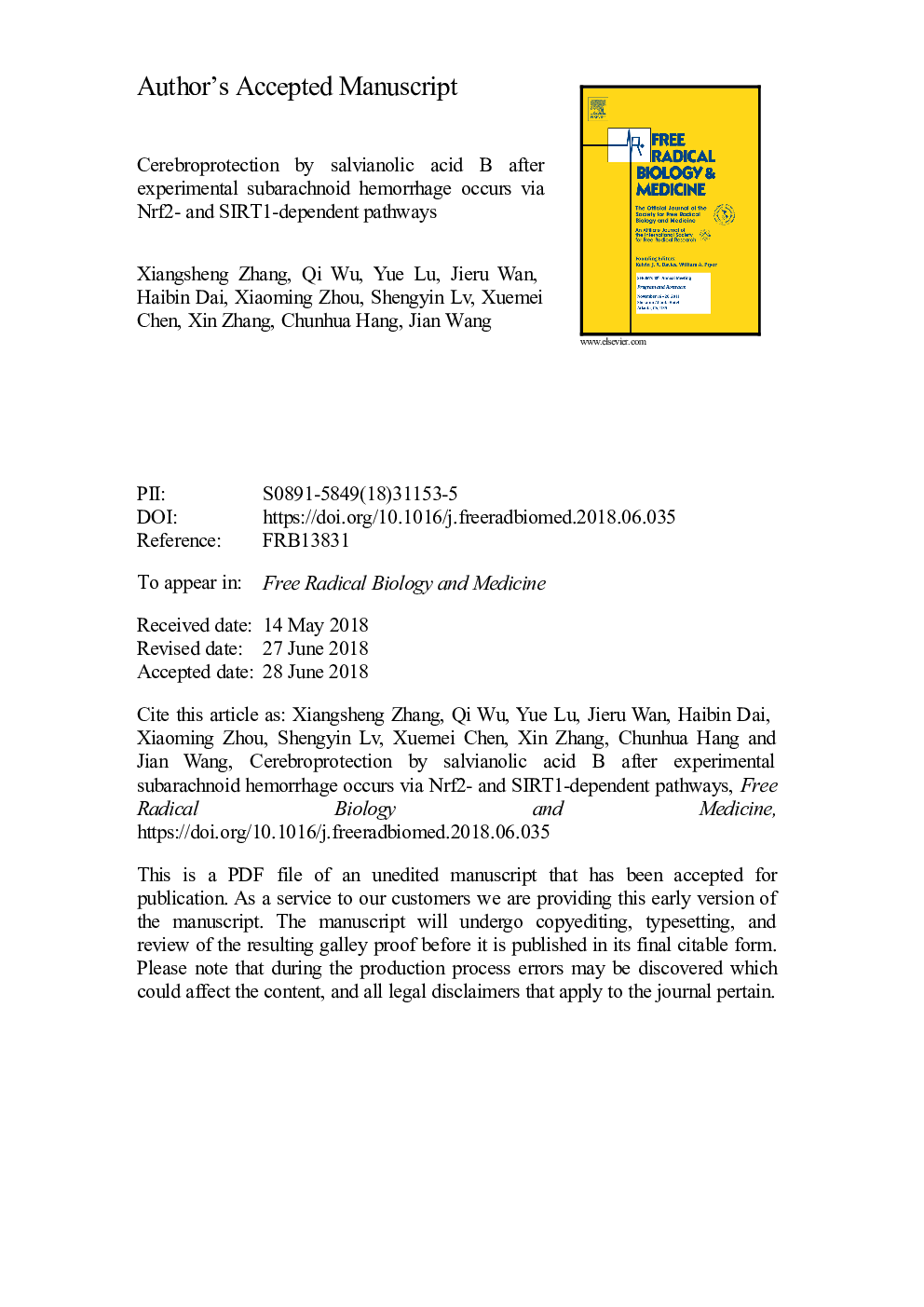| Article ID | Journal | Published Year | Pages | File Type |
|---|---|---|---|---|
| 8265274 | Free Radical Biology and Medicine | 2018 | 46 Pages |
Abstract
Schematic illustrating the possible mechanisms of salvianolic acid B (SalB) action after subarachnoid hemorrhage (SAH). As illustrated, SAH markedly increases reactive oxygen species (ROS) generation in the extracellular space. After stimulation, nuclear factor-erythroid 2-related factor 2 (Nrf2) dissociates from Keap1 and translocates into the nucleus, subsequently inducing the expression of antioxidant enzymes, including heme oxygenase-1 (HO-1), NADPH: quinine oxidoreductase-1 (NQO-1), and superoxide dismutase (SOD), which are critical for maintaining cellular redox homeostasis against oxidative insults. In addition, in response to ROS accumulation after SAH, sirtuin 1 (SIRT1) activation inhibits FoxO1 and P53 acetylation and increases Nrf2 expression to reduce brain damage after SAH. SalB treatment induces the expression of SIRT1 and Nrf2, which in turn modulate downstream antioxidant enzyme expression, thereby ameliorating brain damage after SAH. In contrast, SIRT1-specific inhibitor sirtinol reverses the protective effects against SAH by inhibiting SIRT1 as well as Nrf2 activation, eventually aggravating SAH-induced brain damage.240
Keywords
Related Topics
Life Sciences
Biochemistry, Genetics and Molecular Biology
Ageing
Authors
Xiangsheng Zhang, Qi Wu, Yue Lu, Jieru Wan, Haibin Dai, Xiaoming Zhou, Shengyin Lv, Xuemei Chen, Xin Zhang, Chunhua Hang, Jian Wang,
